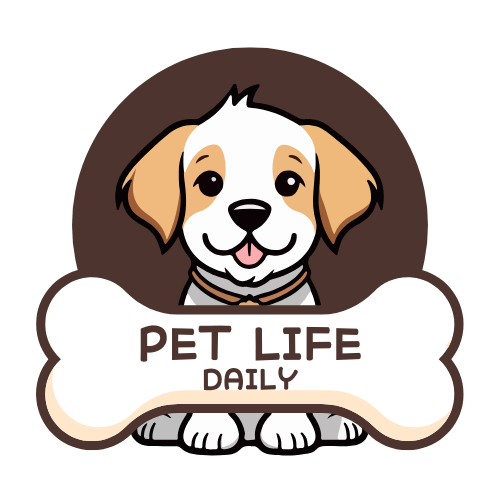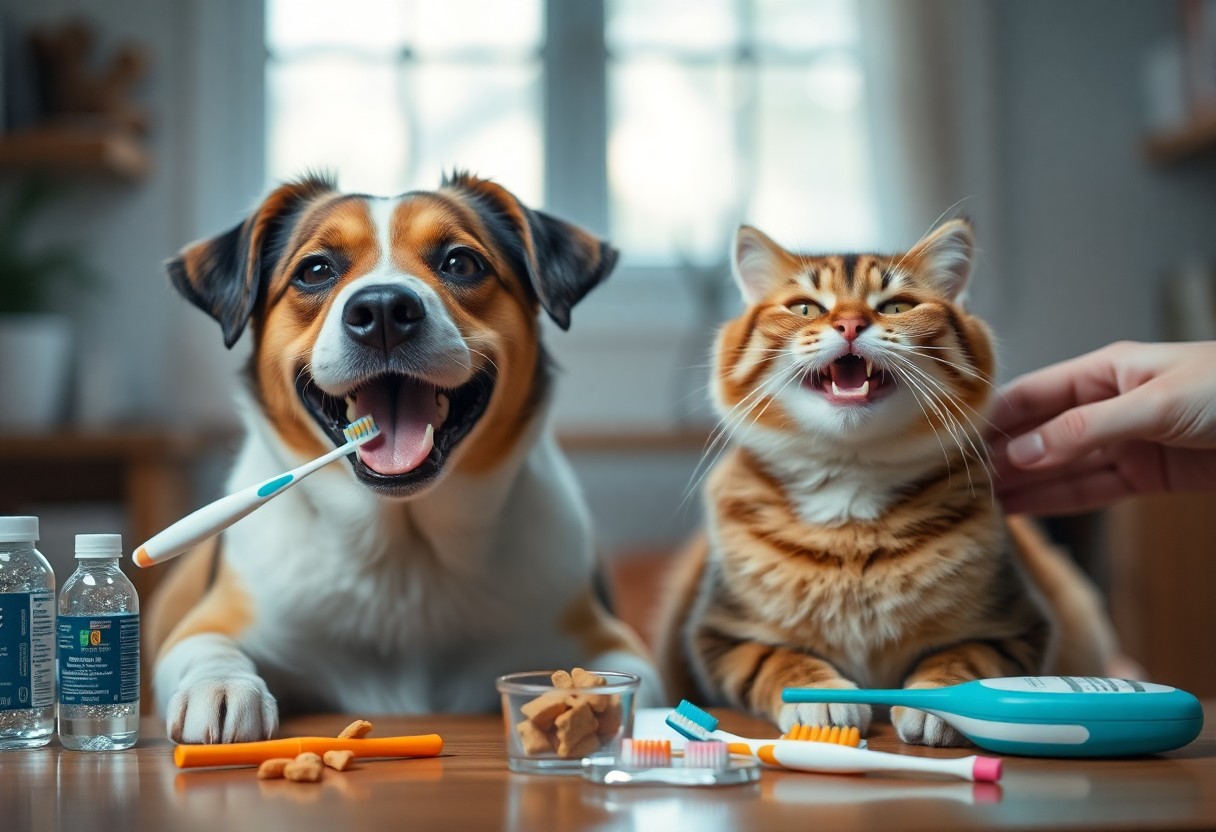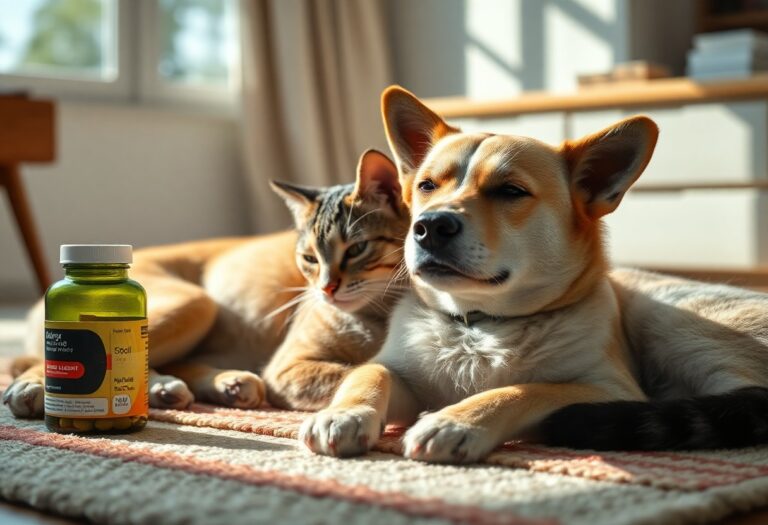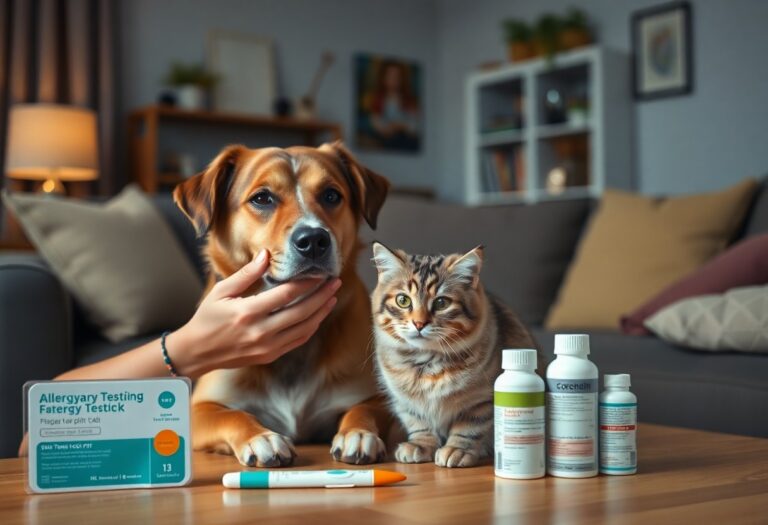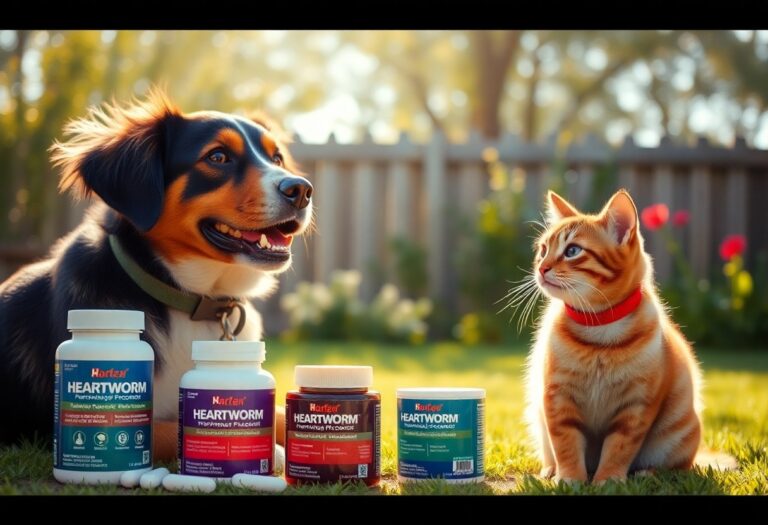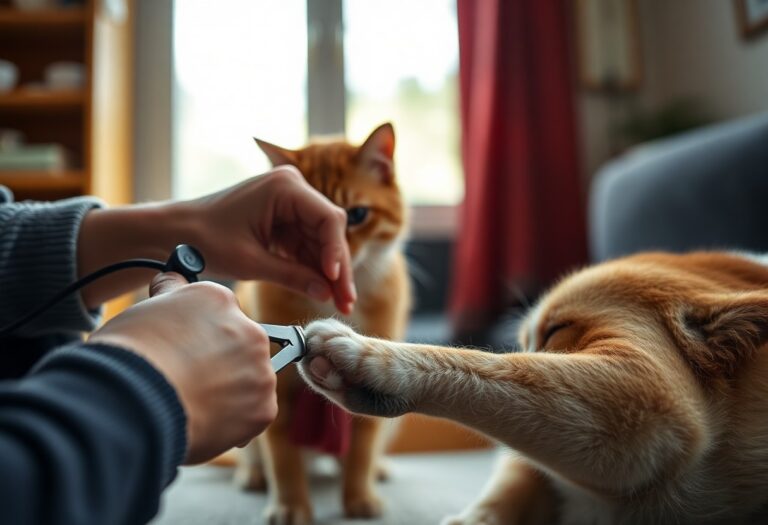Dental health is a vital aspect of your pet’s overall well-being. By implementing proper home care strategies, you can significantly reduce the risk of serious dental diseases that can affect your furry friend. This guide provides you with necessary tips to maintain your pet’s oral hygiene, from brushing techniques to effective dental products. Keeping an eye on common signs of dental issues can also help ensure your pet’s happiness and health. Dive in to enhance your pet’s dental routine and promote a healthier lifestyle together.
The Alarming Truth About Pet Oral Health
Many pet owners are shocked to discover that over 80% of dogs and 70% of cats show significant signs of dental disease by the age of three. This prevalence of dental issues is alarming and highlights the need for proactive care. You might not realize that your pet’s oral health can directly affect its overall health, leading to complications like infections, kidney disease, and heart issues. Plaque accumulation, if untreated, can evolve into periods of serious discomfort, gum disease, or worse. It’s not just about the bad breath; your furry companion’s quality of life could be severely impacted without proper dental hygiene.
Regular dental checkups along with at-home care form the foundation of a well-rounded health plan for your pet. By escalating the importance of oral hygiene in your routine, you’re not only preventing pain but also enhancing your pet’s longevity and well-being. A few simple daily habits can go a long way in preventing painful dental issues that could also incur hefty veterinary bills down the line. It’s time to put your pet’s oral hygiene at the top of your to-do list!
Common Myths Surrounding Pet Dental Care
Many misconceptions surround pet dental care, leading to negligent behaviors that could harm your furry friend. One prevalent myth is that dogs and cats don’t require dental care because they are less prone to cavities compared to humans. This assumption is misleading; while pets may not suffer from cavities in the same way humans do, they are highly susceptible to periodontal disease which can lead to further systemic issues. Assuming dental care isn’t necessary because your pet eats dry food or because they’re still young contributes to the development of harmful plaque and tartar buildup.
Another myth revolves around the belief that bad breath is normal in pets. While many pets do experience this issue, a persistent odor often indicates a serious underlying problem, such as dental disease or infection. Owners may dismiss it as a natural occurrence, risking their pets’ health by delaying necessary treatment. Awareness is vital; understanding that oral health is not just cosmetic but a matter of your pet’s overall health will lead to more informed decisions.
The Long-Term Consequences of Neglecting Dental Hygiene
Failing to prioritize your pet’s dental hygiene can have disastrous long-term consequences. Over time, plaque build-up becomes tartar, which leads to gum disease that may result in tooth loss. Additionally, bacteria from dental issues can enter the bloodstream, impacting vital organs such as the heart, liver, and kidneys. Animals suffering from untreated oral diseases often display signs of discomfort and may become irritable or withdrawn, losing their playful spirit. In some cases, advanced dental disease can lead to life-threatening conditions, dramatically decreasing your pet’s quality of life.
Investing time and effort into your pet’s dental health isn’t just about ensuring they have sparkling teeth and fresh breath. It’s about protecting them from a plethora of health issues that could arise from poor dental hygiene. Regular brushing, providing dental treats, and ensuring annual veterinary check-ups can significantly cut down on risks and help maintain their overall health for years to come. The effort you put into at-home care will reflect positively on your pet’s happiness and longevity.
Essential Tools for At-Home Dental Care
Must-Have Dental Products for Pets
To establish a successful at-home dental care routine for your pet, you’ll need to gather some must-have dental products. A high-quality pet toothbrush, designed specifically for the unique shape of their mouth, is imperative. Look for brushes with soft bristles that can reach difficult areas without harming your pet’s gums. Additionally, pet toothpaste formulated without harmful ingredients like fluoride is crucial, as human toothpaste can be toxic to pets. Choose a flavor your pet enjoys, whether it’s poultry, beef, or peanut butter, to make the experience pleasant.
Dental chews are another valuable addition to your toolkit. These treats not only satisfy your pet’s natural urge to chew but also help reduce plaque and tartar buildup. Look for products that are vet-approved and free from artificial additives. For pets that need extra help, consider supplementing with dental water additives that can combat bacteria and freshen breath simply by mixing them into your pet’s water bowl.
How to Choose Safe and Effective Products
Selecting safe and effective dental care products for your pet requires careful consideration. Start by checking for products that carry the Veterinary Oral Health Council (VOHC) seal of approval, which indicates they meet high standards for effectiveness in controlling plaque and tartar. Ingredients should be clearly listed, and you should avoid any products containing artificial colors, preservatives, or highly processed fillers, as these can contribute to health issues over time.
Reading customer reviews and seeking recommendations from your veterinarian can offer valuable insights into the efficacy and safety of different products. Ensure that dental toys are appropriate for your pet’s size and chewing behavior—what works for a small dog may pose a choking hazard for a large breed. Always monitor your pet’s reactions to new products, especially during the introduction phase, to ensure they adapt safely and comfortably.
Mastering the Art of Brushing Your Pet’s Teeth
Step-by-Step Guide to Effective Brushing
Brushing your pet’s teeth can seem daunting, but breaking it down into manageable steps will simplify the process. Start by selecting a toothpaste specifically designed for pets, as human toothpaste contains ingredients that can be harmful to them. Using a soft-bristled toothbrush is also beneficial; there are toothbrushes with specialized designs for pets available on the market. Follow these steps to ensure effective brushing:
| Step | Description |
| 1 | Get your pet comfortable with the toothbrush by letting them sniff it and lick the toothpaste. |
| 2 | Lift your pet’s lip gently and begin brushing in a circular motion, focusing on the gum line. |
| 3 | Brush for around 30 seconds on each side, ensuring you reach the back teeth. |
| 4 | Reward your pet with praise or a treat to create a positive association with brushing. |
Tips for Overcoming Resistance from Your Pet
Your pet may resist having their teeth brushed, but a few strategies can help make this necessary task easier. Firstly, it can be beneficial to start slowly. Gradually introduce the toothbrush and toothpaste to your pet around playtime or during cuddles, so they don’t associate brushing solely with discomfort. Positive reinforcement is key; rewarding your pet for their patience with treats or praise will increase the likelihood they’ll cooperate in the future.
- Keep the brushing sessions short initially—just a few seconds will help your pet adjust.
- Use flavored toothpaste to entice your pet and make the experience more enjoyable.
- Consider using a finger brush if a proper toothbrush seems intimidating for your pet.
Another tip to consider is incorporating dental care into your pet’s daily routine. If they already have a regimen that includes other forms of handling, such as grooming or bathing, integrate brushing into that time. Furthermore, using calming techniques can also help, such as soothing tones or gentle petting. The aim is to build trust and association, transforming your practice into a bonding experience rather than a chore.
- Identify a time when your pet is most relaxed, and try to brush their teeth during that moment.
- Be patient; if your pet shows signs of stress, take a break and retry later.
- Consult your veterinarian for tips or suggestions tailored to your pet’s particular needs.
The persistence you apply will lead to a more cooperative pet, making dental care less of a battle and more of a shared bonding experience.
Beyond Brushing: Supplementary Dental Care Practices
The Role of Dental Chews and Toys
Your pet can benefit significantly from dental chews and toys, which serve as an excellent supplement to regular brushing. These products are designed to help reduce plaque and tartar buildup by promoting chewing, which naturally cleans teeth and massages gums. Look for dental chews and toys that have the Veterinary Oral Health Council (VOHC) seal of approval, indicating they are effective in controlling plaque and tartar. Brands like Greenies and KONG have various options tailored to your pet’s size and chewing habits, making them accessible for both dogs and cats.
Incorporating these chews into your pet’s routine not only enhances oral hygiene but also promotes healthy chewing behavior, which can reduce boredom and destructive tendencies. Regular exposure to safe dental toys allows your pet to engage in a natural behavior while also contributing to their dental health. Just be mindful of the size and hardness—too hard may risk damaging teeth, while overly small pieces could pose a choking hazard.
Incorporating Diet into Dental Health
Your pet’s diet plays a significant role in their dental health, making it vital to select appropriate food options. Dry kibble can help reduce plaque as the crunchiness of the food provides a gentle abrasive action while your pet chews. Foods formulated with special ingredients, such as probiotics, can enhance oral health by fostering a balanced oral microbiome. Some brands produce specific dental diets that contain added enzymes to combat tartar buildup and freshen breath. Combine this diet with regular dental visits for professional cleanings to ensure any hard-to-reach plaque is addressed.
Transitioning to a dental-friendly diet doesn’t need to be overwhelmingly complicated. Begin by gradually mixing new food with your pet’s current diet, allowing their taste preferences to guide the switch. Your vet can also guide you toward tailored options that suit your pet’s nutritional needs. A focus on high-quality, balanced nutrition not only satisfies dietary needs but also enhances oral hygiene, making it a win-win for your furry friend.
Recognizing Signs of Dental Disease
Warning Signs Every Pet Owner Should Know
Pay attention to your pet’s mouth and overall behavior for any signs that may indicate dental disease. Bad breath is often one of the first warning signs; if your pet’s breath has a strong, unpleasant odor, it could signal the presence of plaque buildup or gum disease. Additionally, watch for changes in eating habits. If your pet hesitates to chew or seems to favor softer food, they may be experiencing pain or discomfort caused by dental issues. Other signs include excessive drooling, pawing at the mouth, or swollen or bleeding gums.
Another indicator of dental problems is a noticeable change in your pet’s behavior, such as becoming irritable or withdrawn. If you notice your dog or cat exhibiting these behaviors, take note, as they may be indicating stress or pain related to dental concerns. Regularly checking their teeth and gums during grooming or playtime can help you catch these symptoms early, ensuring that you can respond promptly.
When to Seek Professional Help
Addressing dental issues early can prevent more serious problems down the line. If you observe any signs of dental disease, such as persistent bad breath, swollen gums, or significant changes in chewing habits, it’s time to consider scheduling a visit to the veterinarian. Regular vet check-ups typically include dental examinations, which are crucial for maintaining your pet’s oral health. If your pet exhibits any symptoms of pain, such as reluctance to eat, whining when chewing, or swollen cheeks, consult your vet as soon as possible.
Routine dental cleanings can also help to catch potential issues before they escalate. A professional veterinary dental cleaning usually involves scaling to remove tartar and polishing the teeth, helping to maintain your pet’s health and comfort. In cases where gum disease is advanced or there are severe dental abnormalities, your vet may recommend further interventions, including dental extractions or more specialized treatments to ensure your pet’s well-being.
To wrap up
Taking this into account, establishing a comprehensive dental care routine for your pet at home is necessary for ensuring their overall health and well-being. Regular brushing, dental treats, and routine check-ups can significantly reduce the risk of developing serious oral health issues in your furry friend. By taking these proactive steps, you can help maintain your pet’s health and provide them with a brighter, happier life.
Additionally, staying informed about the latest dental care products and techniques can enhance the effectiveness of your at-home routine. Make it a habit to educate yourself on your pet’s specific needs and consult with your veterinarian for tailored advice. With dedication and consistency, you can create a positive dental care experience for your pet, ensuring their teeth and gums remain healthy for years to come.
